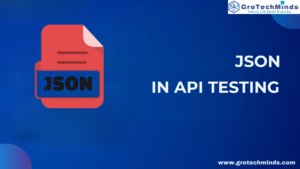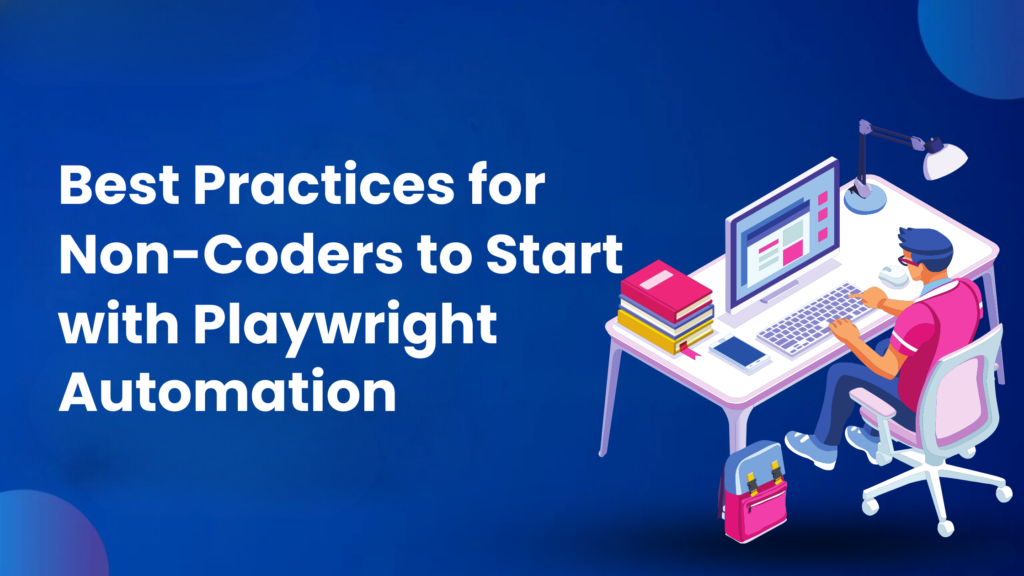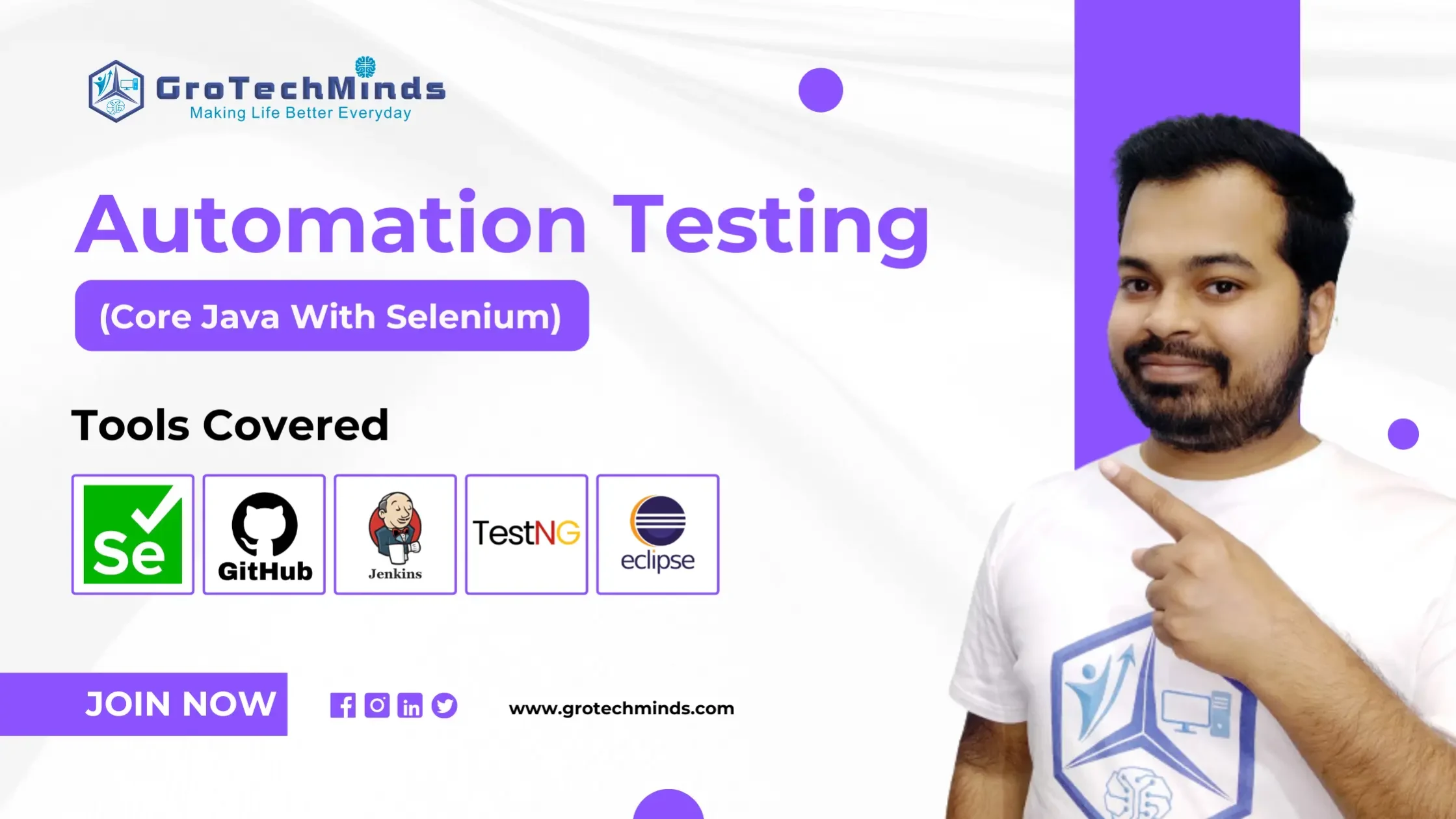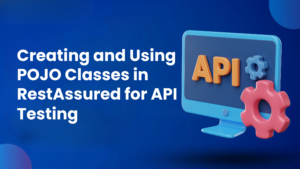

Best Practices for Non-Coders to Start with Playwright Automation
Introduction:
Manual testing has been the most important aspect of software testing process. But due to the increasing need of faster development of application, automation testing process has become the most unavoidable part of software testing. Test Automation is needed to ensure better quality , higher efficiency, reliability and faster test execution. Manual testers have been facing challenges while transitioning into Automation testing domain especially with tools like Selenium, Playwright due to the necessity of learning codes and programming languages especially when they do not have any coding knowledge and experience. But still the manual testers can start their automation journey even without any coding knowledge. This blog will talk about the best practices to be followed by non coders in order to start with Playwright automation.
What is Playwright?
Playwright is a powerful open source automation tool developed by Microsoft used for automating web applications across multiple browsers. Playwright helps to write test scripts for interacting with web pages, perform activities and verify the test results. Playwright also supports various languages like JavaScript, Java, Python, C# etc. In this blog the main focus will be on Playwright with Python for non coders.
Best Practices for Manual Testers for starting Playwright Automation
The following are the best practices a non coder should follow before learning automation testing using Playwright:
1.The fundamentals of Software Testing should be strong:
Before learning playwright it is important to understand some basic concepts related to software testing.
a) Test Case Design: Non coders should have a proper understanding of the test case structure and the procedure of creating test scenarios according to software requirements.
b) Testing Levels: Non code testers should get a thorough knowledge about different types of testing like unit, integration, system and user acceptance testing.
c) Test Frameworks: Manual testers having no prior coding experience should be familiar with various concepts like test suites, test cases and test execution. Test automation tools also depend on various frameworks like TestNG for Java, Mocha or Jest for Javascript and Pytest for Python.
d) Assertions: It involves verification of actual behaviour of the application by comparing actual results with the expected results.
d) CI/CD pipelines: No Code testers should have proper knowledge of Continuous Integration and Continous Deployment for automating the entire process of testing and delivering the software.
Understanding the above concepts will help testers to write meaningful test scripts using Playwright.
2.Perform installation of Playwright:
The initial step for the Playwright journey is installation of playwright. The best part is that no coding knowledge is needed for setting up playwright in the local system. The following steps should be adopted for installing playwright:
a) Node.JS installation: The latest version of Node.js should be downloaded and installed from the official website https://nodejs.org. Since playwright works seamlessly with Node.js.
b) Installation of playwright: After installation of Node.js open the command prompt and run the following commands
npm init -y
npm install playwright
The first command mentioned above will intialize a new project and the second command will install playwright along with its dependencies. Once playwright is installed, you can start executing test scripts for interaction with different web pages.
3.More attention towards visual record and playback:
The initial stage in Playwright for non coders is utilization of playback and visual recording feature. This ensures in recording the user interactions with browser and playback those actions in the form of test automation scripts. This is the way of getting started with playwright without coding which will be immensely helpful for manual testers with zero coding knowledge.
a) Recording user actions:With the help of Playwright, browsers can be launched and various actions like clicking on a button or link, giving text inputs in a text field or form and navigation between different pages can be recorded.
b) Playback of the recorded actions: After recording user actions, playwright creates test automation scripts that can be modified and executed to replay the user actions. This is an effective way of building automation test scripts without writing any code for it.
By doing thorough practice of recording and playback, you will be able to understand how playwright performs actions on different elements of web page and perform automation testing of manual test steps.
4.Making complete using of Playwright’s Inspector tool:
Playwright provides an inspector tool that enables no code testers to identify elements and perform actions on web pages. This tool helps to visually select UI elements and create codes for the actions on those elements.
a) Identification of Elements: After selecting elements from web page(buttons, text field, links etc.) playwright will show the respective selectors for those elements in the test automation script. Playwright inspector will give the most ideal selector for ensuring effective and reliable tests.
b) Utilisation of Playwright API: It is not necessary to learn coding in order to explore Playwright API. Using Inpsector tool of playwright, you can familiarize yourself with various methods and interactions available in playwright like click(), fill(), goto and expect().
5.Thorough understanding of Playwright Selectors: After transitioning from manual to automation testing it is essential to learn about selectors used in playwright. Selector refers to locating and performing actions on an element in the web page. Inspite of no coding knowledge it is essential to identify the correct selectors for your automation test scripts.
a) CSS Selectors: CSS Selectors are used in playwright for locating elements and performing actions on them. This is same as using Xpath for finding elements. Although it is not required to write complex selectors, still it is important to know about basic selectors like # id, class etc. for writing proper test scripts.
b) Selector API of Playwright: Playwright provides tools to create selectors automatically. You can also use various strategies like text=, role= attributes etc. for locating elements.
6.Knowledge about Assertion Libraries:
Assertion is the most important aspect of Automation testing. In Playwright assertion refers to comparison between actual and expected behaviour of the software application. For testers with zero coding knowledge it is important to get themselves familiar with common assertion commands.
a) Playwright Assertions: Playwright provides in build assertions commands that can be used for validating page elements, URLs and contents of texts etc.
b) Test Libraries: Various Test libraries like Jest, Pytest can be used alongwith playwright for writing structured test scripts and create more readable syntaxes for assertion of conditions.
7.Begin with simple test cases:
Start Practising with simple test cases like verification of title of the page, checking whether a particular text is displayed, validation of user inputs in a text field or form, verification of clicking on a button resulting in navigation to desired page. Then go for the complex test cases after familarising yourself with automation tools and logic behind automation.
8.Increase the testing knowledge by following tutorials and documentation of Playwright:
The documentation of Playwright contains lot of examples, tutorials and best practices which will give immense knowledge on advanced concepts related to playwright like handling of dynamic content, automation of popups and alerts, Performing file uploads and downloads, Doing parallel testing for faster test execution.
9.Integration with CI/CD pipeline:
After gaining expertise in writing test scripts the next step will be to integration the playwright scripts into a CI/CD pipeline. This ensures automation test scripts after every modified code is pushed into the pipeline. Various CI/CD tools like Jenkins, GitHub Actions etc. are configured with Playwright for executing the test scripts after every deployment.
Conclusion
The transition from Manual testing to Automation can be challenging as well as advantageous. Through playwright, no code testers can enter the automation test domain easily without any coding knowledge. The main approach is to follow simple learning steps which starts with understanding the fundamentals of testing, then moving forward with low code tools like visual recording and playback and then finally having an indepth knowledge of writing automation scripts. Remember to practise, stay updated with the latest trends in Python with Playwright Course,and maintain a positive attitude throughout your interview process.Through consistency and practice a person with zero coding experience can become a successful Playwright automation tester and utilise the concepts in their real time projects.
Also read:
Consult Us


















